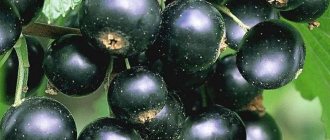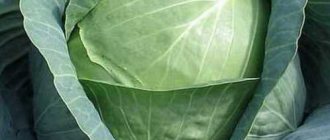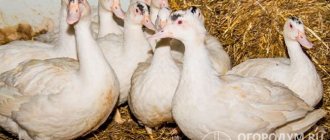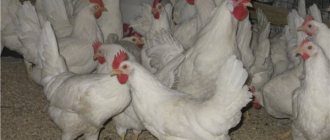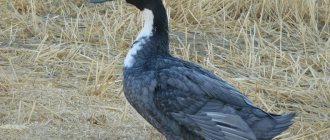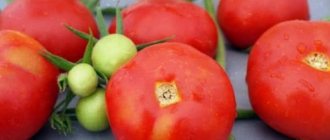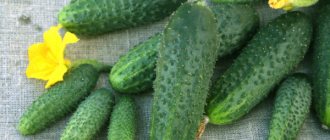Cucumbers are one of the most popular crops grown in summer cottages and agro-industrial farms. The application is quite wide - it includes cooking, cosmetology, and traditional methods of treatment. The small fruits are noteworthy. Gherkin cucumbers will be appropriate for any table. They are usually consumed pickled or salted. They are also suitable for table decoration in salads and appetizers. What gherkins are and what they look like will be explained in this article.
Characteristics and description of gherkins
Gherkins differ from the usual cucumbers in their small size. As a rule, the length of the fetus does not exceed 10 centimeters. Their unusualness among standard varieties is clearly expressed in their dense structure without voids and an appetizing crunch when consumed. For this reason, it is gherkins that are most often used for pickling and in appetizers for the holiday table.
To the question “are gherkins a variety or unripe cucumbers?” the answer is simple. Gherkins are a separate variety, which also has many subspecies. They differ in the speed of ripening, taste characteristics and care features. If desired, you can also use standard types of cucumbers when they have not yet reached the size corresponding to the characteristics. But they will not have a cavity-free structure like the variety in question.
Gherkin cucumbers are conventionally divided into subspecies according to size characteristics:
- Pickles . Length on average 4-5 cm.
- Mini gherkins . Length does not exceed 7 cm.
- Standard gherkins . Length up to 10 cm.
Growing gherkins is adapted for both open ground and closed greenhouses. Each method is distinguished by the characteristics of care and the varieties used.
Canned gherkins
Features: gherkin sizes
Small cucumbers came from France - it was French breeders who set the fashion for crispy small fruits. Don't confuse gherkins with pickles - yes, some gherkins can be pickles, but not all. The first type of cucumber grows to a maximum of 9 cm, and usually no more than 5. It is a several-day-old fruit, which, from a botanical point of view, is more like an ovary. And the second type is any small pickled vegetables. That is, pickles can be cucumbers, tomatoes, onions, carrots, even corn cobs.
Gherkins have a number of differences from ordinary pickling and salad cucumbers. The main ones are high density and the absence of voids, due to which the vegetable turns out crispy.
What cucumbers should look like
Gherkins are cylindrical in shape and bright green in color (Meringue is a good example). The ripening time is short, the taste is high, and the fruits usually do not have time to acquire bitterness within a few days from the moment the ovaries form. Another important advantage of gherkins is their versatility (they can be pickled, salted, used for making salads, canapés, or eaten in their pure form). Hybrids are resistant to most pests, such as aphids, mites. The yield is not bad, the only disadvantage of the cucumber variety is the presence of prickly thorns.
They are cylindrical in shape and bright green in color.
Differences between gherkins and pickles
Pickles and gherkins are most often pickled products. But if you always find cucumbers in a jar of gherkins, then pickles can be small fruits and vegetables (including cucumbers). Moreover, in a jar with a pickled product you can find both one type of culture and an assortment.
Therefore, a gherkin can be a pickle, while a pickle will not always be a gherkin.
Pickles - small vegetables and fruits marinated in vinegar
Productivity
You need to harvest the bushes often - every few days. Mini-hybrids are unlikely to outgrow 5-9 cm, but until the old fruits are removed, new ones are not set. The minimum growth period of the plant is 35 days (depending on the variety); from one bush, subject to the rules of care, you can collect 10 kg or more per square meter. The number of harvests is 2-3 per season. The fruiting period of gherkins lasts from June until approximately the end of August or early-mid September. At the end of the season, the fruits should be collected periodically, rather than waiting until they reach their maximum size.
Productivity is up to 10 kg per square meter
Mini-gherkin varieties acquire full commercial qualities in small-sized specimens. That is, a cucumber 3 cm long will be fully ripe.
Composition and calorie content
Among other food products, gherkins are distinguished by their calorie content, suitable for strict diets - 28 kcal per 100 grams. They are similar in composition to cucumbers. They have a large amount of vitamins and microelements.
Gherkins composition per 100 grams:
| Ingredients and vitamins | Quantity per 100 g | Macro- and microelements | Quantity per 100 g |
| Carbohydrates | 6 g | Aluminum | 815 mcg |
| Squirrels | 1.2 g | Bor | 100 mcg |
| Fats | 0.1 g | Iron | 0.4 mg |
| Ash | 1 g | Iodine | 2 mcg |
| Water | 90 gr | Cobalt | 1 mcg |
| Organic acids | 0.1 g | Manganese | 0.21 mg |
| Alimentary fiber | 0.5 g | Copper | 135 mcg |
| Mono- and disaccharides | 5 g | Molybdenum | 10 mcg |
| Starch and dextrins | 5 g | Fluorine | 14 mcg |
| Vitamin B1 | 0.04 mg | Zinc | 0.29 mg |
| Vitamin B2 | 0.05 mg | Potassium | 238 mg |
| Vitamin B6 | 0.2 mg | Magnesium | 9 mg |
| Vitamin B9 | 18.5 mcg | Sodium | 20 mg |
| Vitamin A, RE | 20 mcg | Sulfur | 15 mg |
| Vitamin C | 5 mg | Phosphorus | 34 mg |
| Vitamin RR, NE | 0.8992 mg | Chlorine | 47 mg |
| Niacin | 0.6 mg | Calcium | 15 mg |
| Retinol | 0.02 mg |
Identical to standard greens, small cucumbers are 95% water.
Another recipe
Now we will look at another recipe for gherkins for the winter. These cucumbers go well with any dish.
To prepare you will need:
- two liters of water;
- one kilogram of gherkins;
- three cloves of garlic;
- one teaspoon of mustard beans;
- one small carrot;
- 70 ml vinegar 9%;
- two bay leaves;
- ten grams of dill with umbrellas;
- two teaspoons of salt;
- two tbsp. spoons of sugar;
- 4 things. allspice and the same amount of black pepper;
- two leaves of horseradish, currants and cherries.
Having collected all this, start cooking.
Growing and care
Gherkins require more care than standard greens. They are very sensitive to soil quality, environmental conditions, and pests. Therefore, to obtain a good harvest, it is necessary to carefully monitor the plantings and provide proper care.
When planting seeds, work is done in a greenhouse or at home in special containers. The soil for cultivation is fertilized or ready-made soil is purchased in specialized stores.
Pre-treatment of seeds consists of soaking in growth stimulants or a solution of potassium permanganate for 3 hours. Then the seeds are laid on moist soil (temperature above 17 ° C ) and covered with slightly wet gauze. When roots begin to form, the seeds are planted 3 cm into the ground and watered.
In the event that seedlings are planted, the ground is pre-treated. Weeds are dug up and enriched with mineral and organic fertilizers.
Young gherkins on a bush
The landing site is leveled to facilitate work. The degree of soil moisture is also important. It is necessary to avoid excessive dryness (if necessary, water twice a day), but also not to overwater so that rot does not appear.
Basic rules of care:
- It is necessary to regularly dig up the soil and get rid of weeds. Use extreme caution to avoid damaging the sensitive root system;
- Systematically water the bushes at the roots. At elevated ambient temperatures, work can be carried out every day. When flowers appear - every other day. For additional replenishment, fertilizers can be periodically added to the water for irrigation;
- Fertilizer with mineral and organic preparations. Throughout the summer, depending on the initial condition of the soil, work is carried out at least 5 times.
- In order to prevent the bushes growing upward from falling, they must be tied to the upper crossbars of the greenhouse or greenhouse or to a stick installed vertically.
- Harvesting is carried out regularly, at least once every 2 days.
If you do not treat the plantings and do not provide proper care, the vegetable crop may be subject to a number of diseases and pest attacks:
- Aphid . Signs: the above-ground part dries out and turns yellow. The leaves of the plant bend and the flowers fall off. To fight, use solutions of laundry soap and ash, or onions and garlic;
- Rust . The green part is covered with dark burgundy rashes. Treatment is carried out with fungicides;
- Root-knot nematode . With this type of disease, the growth of the bush stops and it does not bear fruit. Fight with chemical methods or steam treatment;
- Downy mildew . Signs of infection are light inclusions that form on the leaves and subsequently completely affect the ground part of the bush. Chemical or folk methods are used to combat;
- Spider mite . The ground part turns yellow and fades. At the first signs, treat with a solution of soap and water.
Planting care
In the open ground
Gherkins are grown outdoors most often in regions with warm climates. To obtain an early harvest, plant seedlings (pre-grown on a windowsill or in a greenhouse). The start time of work directly depends on the temperature to which the earth has warmed up. It must be at least 14 °C , otherwise the bushes may die.
Work order:
- Enrich the soil with fertilizers;
- Make 5 cm indentations with a distance of 60 cm between them;
- The beds should be located at a distance of about 2 meters from each other;
- Carefully, without damaging the root system and above-ground parts, plant the seedlings;
- Carry out watering.
The difference in harvest time between planting seedlings and seeds is approximately 14 days .
Gherkin seedlings
In the greenhouse
To grow gherkins in a greenhouse, it is advisable to choose self-pollinating varieties that are resistant to disease.
On a note ! The air humidity in the enclosed space where gherkins are grown should initially be 95% . When sprouts appear - 80% . Air access must be provided to the room to prevent the formation of mold.
Watering is carried out exclusively on the rhizomes, preventing water from entering the ground part and leaves. When the underground part reaches the surface, it is covered with treated soil.
Of course, the temperature regime organized in the greenhouse is important. After planting, the temperature should not fall below 26°C . When sprouts appear within a week - 23°C . Further not lower than 20°C . When the bushes get stronger, set the minimum temperature to 18°C .
Gourmet cucumbers
Good varieties
Choosing the right variety is the key to successfully growing delicious gherkins. Most Popular:
- “Parisian gherkin” is an early-ripening crop, pollinated by bees. The first harvest is harvested 41 days after planting in the ground. The fruits reach 6-10 cm in size.
- “Moravian Gherkin F1” has high taste qualities and grows no worse in the ground than in greenhouses.
- “Gerda F1”, “Kai F1 ” - these varieties have similar parameters and give a good harvest even in conditions of lack of heat.
- "Advance F1" is an early ripening crop with excellent taste characteristics, the length of the fruit is 7-9 cm.
- “Thumbelina F1” is an early ripening variety, unpretentious to storage and transportation conditions.
- “Harmonist F1” - the crop has the longest fruiting period, bunched ovaries are formed during the growing season.
- “Chinese resistant” is a hybrid with high immunity that is not afraid of most diseases. Read about cold-resistant Chinese cucumber here.
Mini gherkins are harvested a few days after flowering ends.
Reviews from gardeners
Libre Commt levent
I plant varieties with a bunched ovary; 5-8 cucumbers grow from one node, which is why they are called bunched ovaries.
Source: ok.ru
Kitten, Moscow
My favorite variety at the moment is Claudia. This beauty has never let me down. The cucumbers are always neat, with small seeds and sweet!
This variety is also very good in twists, the jars have been standing for two years now (last year the harvest was simply gigantic), and they taste like new. Hard, crispy.
Source: forum.tvoysad.ru
Useful materials
Mitze Schindler Strawberry Garden: 7 features and 12 tips for planting and care Fuji Apple Tree Garden: description of the variety, tips for planting and care Vegetables Tomato Pinocchio: 7 features and 11 tips for planting and care
Hi all!
I’ve already told you what gherkins and pickles
. What criteria should be used to select varieties for pickling small green vegetables?
Now I want to make a selection to make it easier for both you and me to choose varieties that produce small cucumbers in large quantities.
Choosing a place for beds
Loose and light soils with an acidity level of 6 to 7.5 pH are good for gherkins. If the soil is excessively acidic, it is advisable to carry out preliminary liming. Adding organic matter during the autumn digging of the garden will increase the fertility of the soil and supply it with the necessary amount of nitrogen.
The gherkin is a capricious culture in both light and cold. It is better to make cucumber beds in the form of ridges, with a slope to the south - this way they will be protected from the north wind. To avoid overcooling of the soil during late spring frosts, special mobile beds with film insulation can be made for gherkin cucumbers.
What are the advantages
If the cucumber leaves the garden so quickly, why did the breeders put so much effort into creating the variety? It's simple.
- During the month of fruiting, cucumber vines do not have time to accumulate diseases and there is no need to treat them with fungicidal preparations. This allows you to grow a very pure product;
- After the end of fruiting, the canes are immediately removed from the garden bed or greenhouse and another crop is planted in their place. Thus, two crops can be harvested from one plot.
Popular with poultry farmers
Cornishes hold one of the leading places in popularity among poultry farmers when the question arises of choosing a breed for breeding.
This is facilitated by data characterizing the bird:
- high productivity;
- resilience and rare incidence of morbidity;
- moderate mobility;
- unpretentiousness in everyday life and adaptation to different climatic conditions;
- high growth rate.
Gherkins are very popular among poultry farmers.
Demand for young meat
The peculiarity of the breed is the valuable meat of gherkin chickens, which are raised until they reach a weight of 350-600 g (2-3 weeks of life), then sent for slaughter.
Gherkin meat is rich in vitamins PP, H, C, E and group B, as well as minerals, incl. potassium, phosphorus, iron, etc.
Chicken carcasses weighing up to 1.5 kg (from 8 weeks) are in demand due to their well-developed, wide breast and large mass of white meat.
Small cucumbers turn yellow. Why did the cucumber tops turn yellow?
Yellowing of the tops is a common occurrence. For some, only part of the leaf turns yellow, for others, absolutely all the tops may turn brown and dry out. Sometimes this happens: a gardener notices a light border on the green mass of a bush.
Most often, the reason for this kind of “change” cannot be found out. But you cannot despair, otherwise there is a risk of losing absolutely the entire harvest. It's better to try to find out the reason.
If you know the reason for this kind of change, then you can take the necessary measures to save the harvest. There can be many of them:
- the plant does not have enough sunlight;
- the cause may also be an excess of sunlight;
- if watered with cold water;
- the plant is not pollinated enough;
- it became ill with a fungal infection or was attacked by aphids;
- her lifespan has simply expired;
- The yellowing was due to a lack of minerals in the soil.
Aphid
We need to take a closer look at some of the reasons:
- Lack of light. This is the most common reason why cucumber tops turn yellow. Especially on the lower leaves. In central Russia this is a fairly typical situation, and there is no need to worry. But if even in ideal lighting the tops of cucumbers turn yellow, what should you do? Inspect the beds, do they resemble dense thickets? It is difficult for the rays to get through the thicket of plants, so some of them will turn yellow. You just need to remove them in time.
- Fungal infection and aphids. A solution of soda will help against fungal infections. A tablespoon of this mixture is dissolved in 10 liters of water. Then you need to water the bushes with the resulting solution. The following remedy is effective against insects: a decoction of onion peels should be infused throughout the day. Then you need to dilute it with water and spray the leaves with it. If the gardener is sure that the cause is aphids, then an infusion of hot pepper and garlic will help him.
- Aging due to natural causes. In July, the tops turn yellow for natural reasons. By mid-summer, the vast majority of gardeners have already managed to harvest their harvest. So few people think about the problem of yellowing of tops.
Cucumbers are small, as they are called. Gherkins - small cucumbers with big possibilities
In general terms, gherkins are any small cucumbers, which, in fact, can be obtained from absolutely any variety by removing the fruits from the branches at a certain time.
However, in fact, there are certain varieties of gherkin cucumbers, and only such fruits have unique qualities and properties not inherent in other types. So, “gherkin” is a variety whose fruits are not capable of growing more than 10 cm in length and have unique characteristics. These cucumbers are very dense and elastic in structure and contain many useful substances and microelements.
The benefits of small cucumbers
Among the beneficial properties of the fruit are the following:
- Helps improve digestion and normalize appetite, optimize the functioning of the gastrointestinal tract, bringing acidity to a normal level.
- Due to the low calorie content, they are suitable for use in dietary dishes.
- The fiber contained in gherkins helps cleanse the intestines of waste and toxins and normalizes cholesterol.
- The presence of potassium in fruits tones the muscles of the heart and kidneys, which immediately affects the overall level of human performance.
- Such cucumbers are indicated as part of dietary dishes for people prone to swelling, since they contain substances that help remove excess fluid.
- The iodine content helps prevent the development of negative processes in the endocrine system and the thyroid gland.
- The juice extracted from these cucumber fruits is excellent for use in cosmetology - it improves the condition of the skin, relieves swelling and inflammation, and removes signs of fatigue and lack of sleep.
Growing gherkins
Each variety of cucumbers has its own characteristics related to the preparation of conditions for their cultivation and care. Gherkins are no exception in this matter. Since there are a great many varieties of these small fruits, the rules of care may be different, but the general points are as follows:
- It is unacceptable to allow the temperature to drop below +5C - the gherkins will die immediately. The minimum temperature for the full cultivation of plants, at which a certain number of ovaries are formed, and the shoots remain resistant to bacterial and viral infections, is a temperature of +15C. Anything lower will affect the quality of the crop.
- Optimal conditions for cucumbers are created by soil with acidity pH = 6.5-7, this level allows you to retain moisture at optimal values.
- Good care involves regular fertilization of the soil. Cucumbers belong to bush crops that prefer organic fertilizing options to mineral ones, so the best way to preserve and increase soil fertility is to introduce manure or compost into it.
- Monitor the nitrogen content in the soil - its increased level will provoke the growth of foliage to the detriment of high yields.
- It is a well-known fact that all cucumbers are extremely moisture-loving plants; gherkins are no exception to this rule. During the period of initial growth, the bushes require regular watering at least twice a week, and during the flowering and fruiting period, the water supply must be increased. If there is a lack of moisture, the shoots will begin to wither and the ovaries will cease to form. This is fraught not only with a decrease in yields, but also with the complete death of seedlings.
- Sunlight has a positive effect on plant development, but only if the measure is observed. If the sun is too hot (this is especially typical for the southern regions of Russia), areas with planted gherkins must be artificially darkened.
- We have already mentioned the minimum temperature for growing, now let’s talk about the optimal one. During the period of seed germination, it is desirable that the soil warms up to the required +24+35C, in the future it must be lowered to +16 at night and +23+26C during the day.
Bee-pollinated hybrids for open ground
I looked at the State Register and seed catalogs. I found out that these are the cucumbers that have the word “gherkin” in their name. Moreover, bee-pollinated ones are considered the most delicious.
But there are disadvantages:
- It is recommended to grow in open ground or under temporary cover, which is removed every day;
- there are barren flowers, which means the yield will be lower; Moreover, it depends on the weather: bees do not fly in rain and cold.
Siberian gherkin
Just right for my region. The author and originator is the Agros company.
- Bee pollinated.
- The bush is indeterminate, fruiting is long-lasting.
- There are 1-3 ovaries in each leaf axil.
- Ripening period is 43-49 days.
- Zelentsy are 8-11 cm long, weighing up to 100 g.
- The taste is excellent.
- It has comprehensive disease resistance.
- Daily collection of greens is recommended.
Photo from our local store's seed catalog.
Parisian gherkin
Old variety, author unknown, originator - Poisk company.
- Bee-pollinated for open ground.
- Indeterminate bush.
- Ripening period is 38-45 days.
- The length of the greens is 8-10 cm, weight – 57-80 g.
- There is no tufted ovary.
- It is recommended to collect gherkins every day.
- Resistant to downy and powdery mildew.
Moravian gherkin
Not new either. Named after its place of origin. Moravia is a historical region of the Czech Republic. I don’t think I’ve tried cucumbers from the Czech Republic yet.
- Bee-pollinated for open ground.
- Ripening period is 40-45 days.
- The bush is indeterminate, vigorous.
- Weight of gherkins – 68-94 g.
- There is resistance to viral and fungal diseases.
